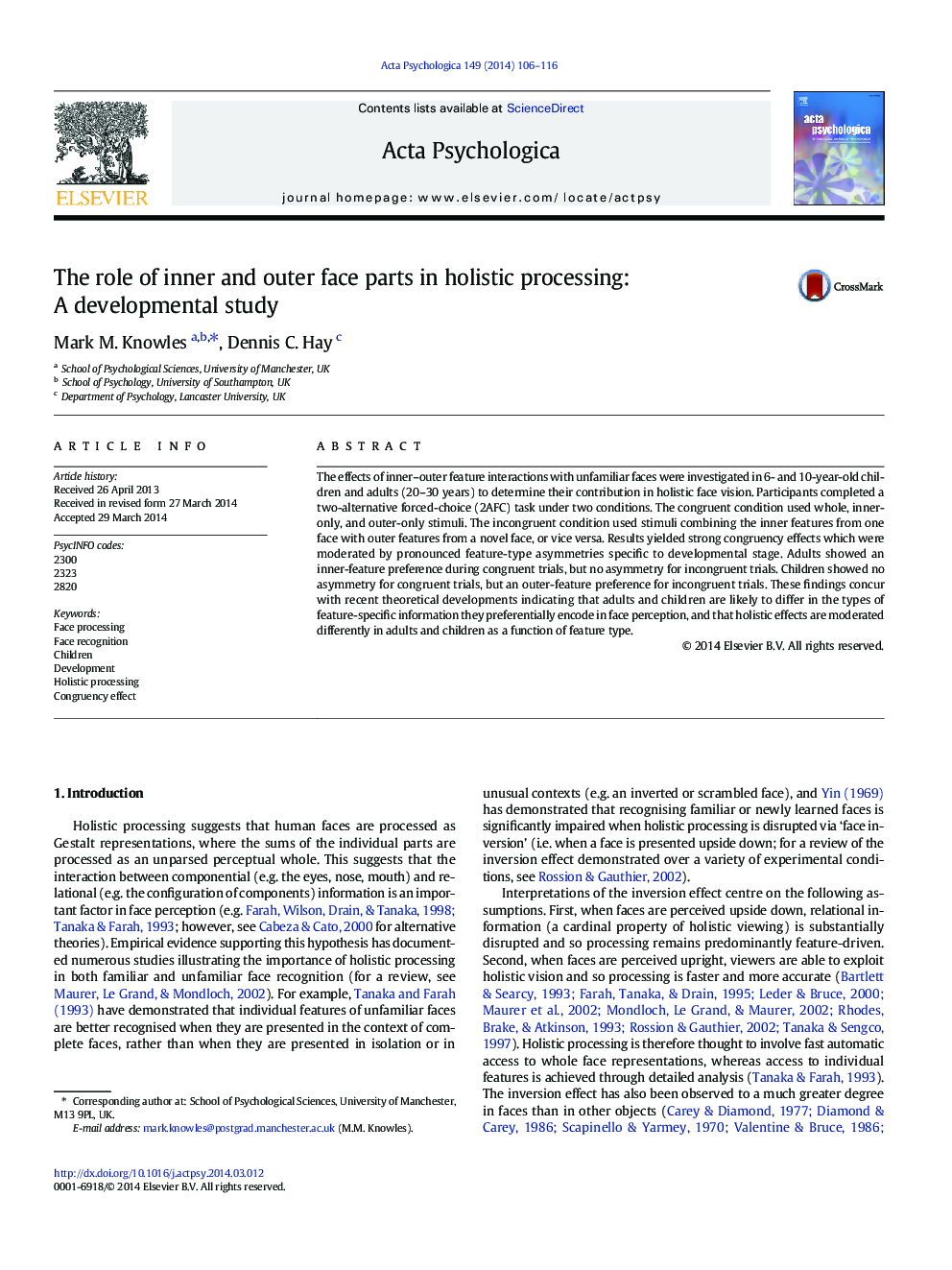| Article ID | Journal | Published Year | Pages | File Type |
|---|---|---|---|---|
| 7277694 | Acta Psychologica | 2014 | 11 Pages |
Abstract
The effects of inner-outer feature interactions with unfamiliar faces were investigated in 6- and 10-year-old children and adults (20-30Â years) to determine their contribution in holistic face vision. Participants completed a two-alternative forced-choice (2AFC) task under two conditions. The congruent condition used whole, inner-only, and outer-only stimuli. The incongruent condition used stimuli combining the inner features from one face with outer features from a novel face, or vice versa. Results yielded strong congruency effects which were moderated by pronounced feature-type asymmetries specific to developmental stage. Adults showed an inner-feature preference during congruent trials, but no asymmetry for incongruent trials. Children showed no asymmetry for congruent trials, but an outer-feature preference for incongruent trials. These findings concur with recent theoretical developments indicating that adults and children are likely to differ in the types of feature-specific information they preferentially encode in face perception, and that holistic effects are moderated differently in adults and children as a function of feature type.
Keywords
Related Topics
Life Sciences
Neuroscience
Cognitive Neuroscience
Authors
Mark M. Knowles, Dennis C. Hay,
